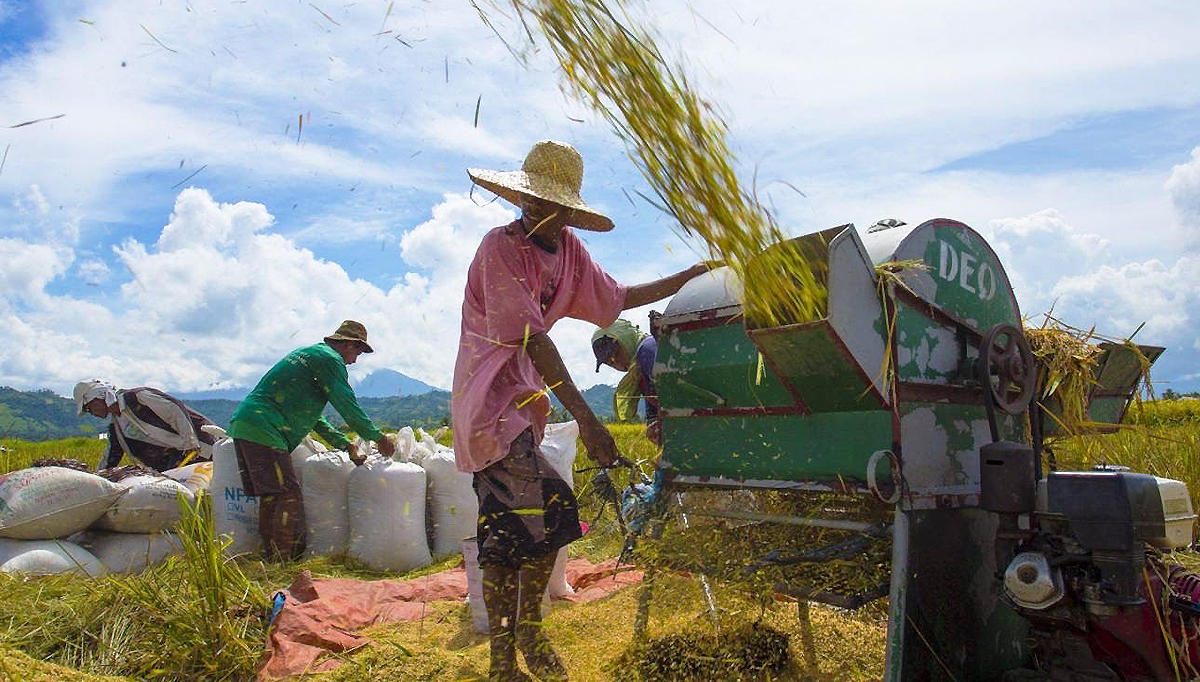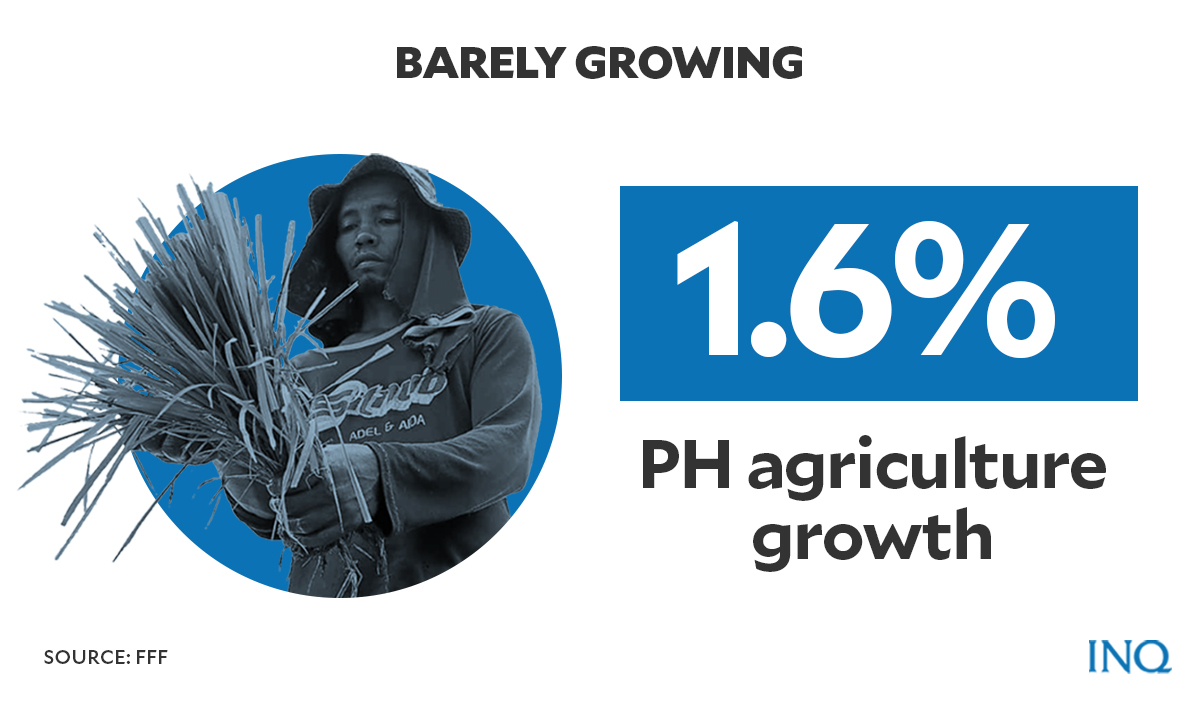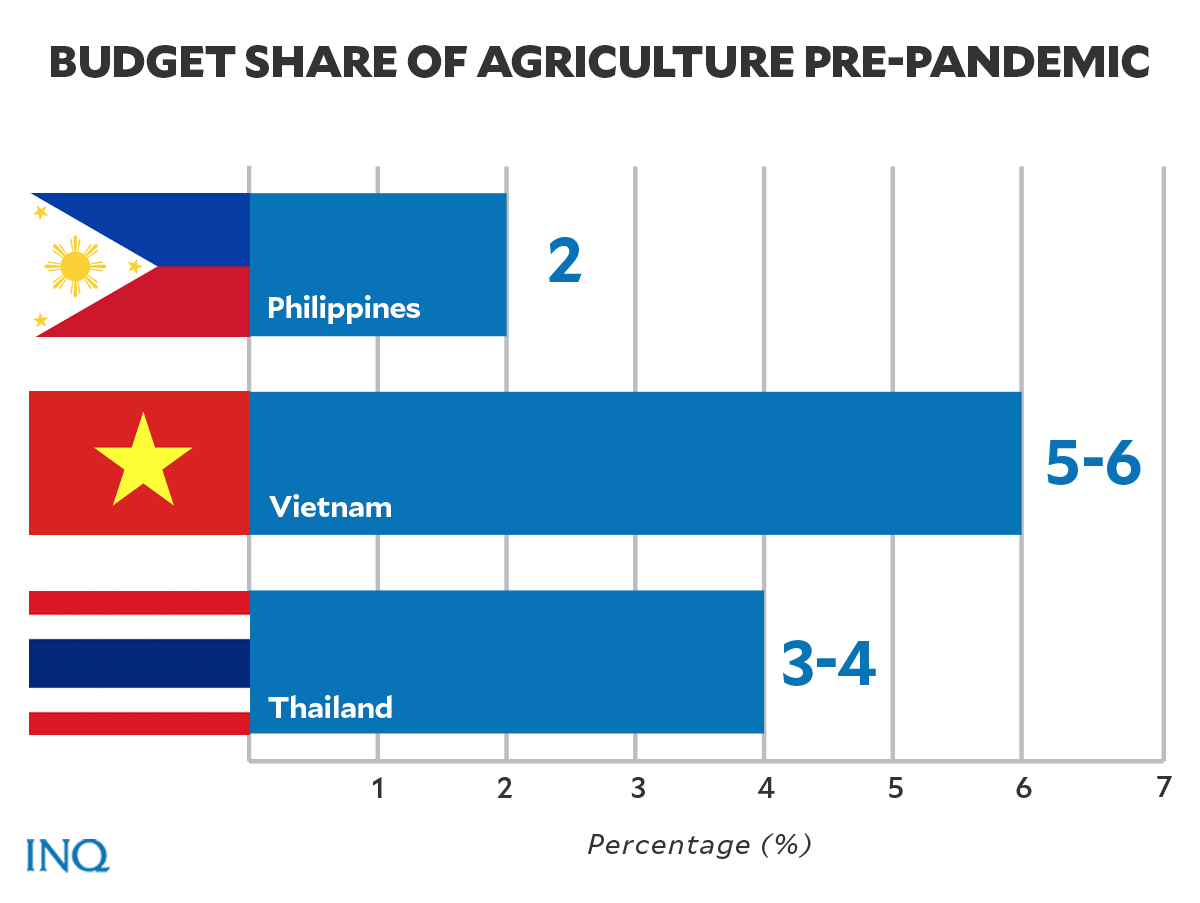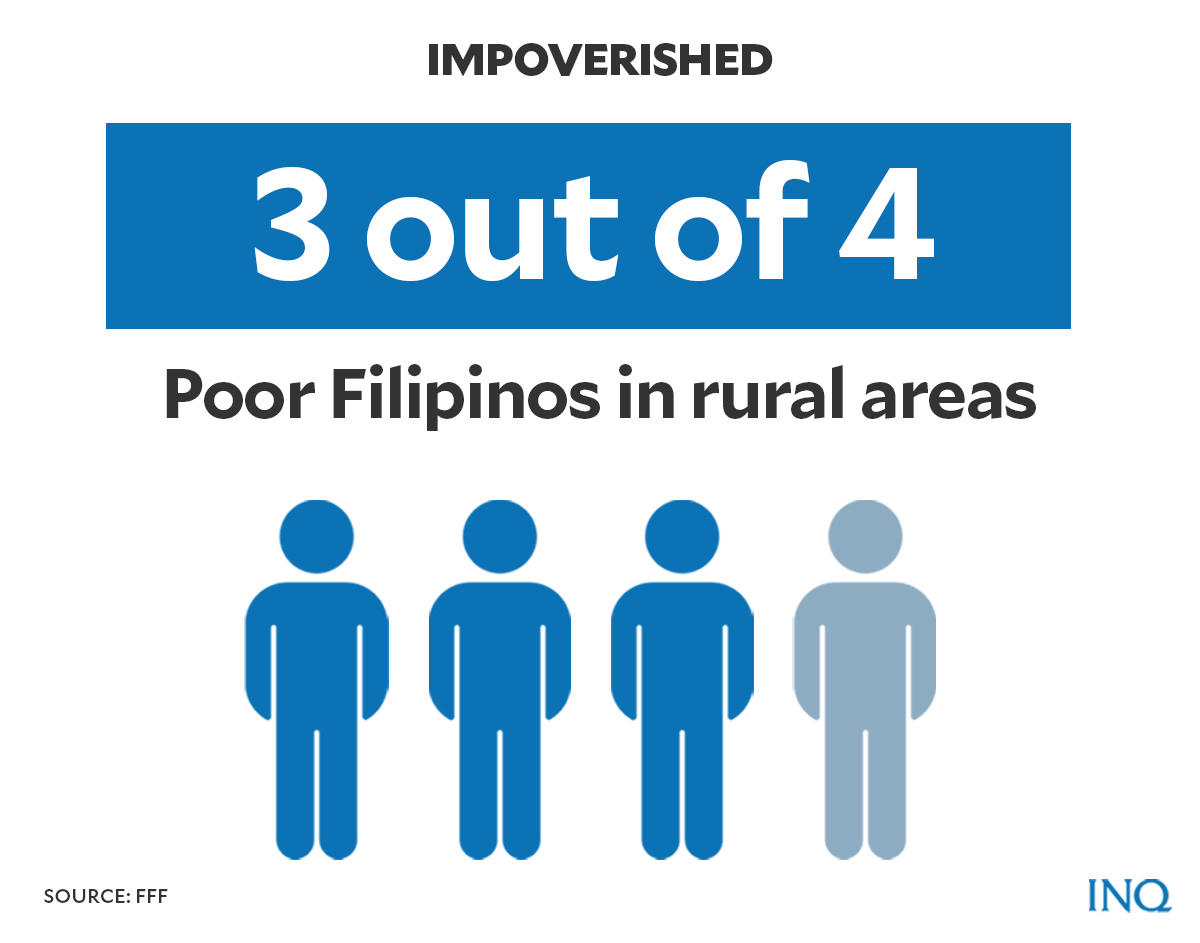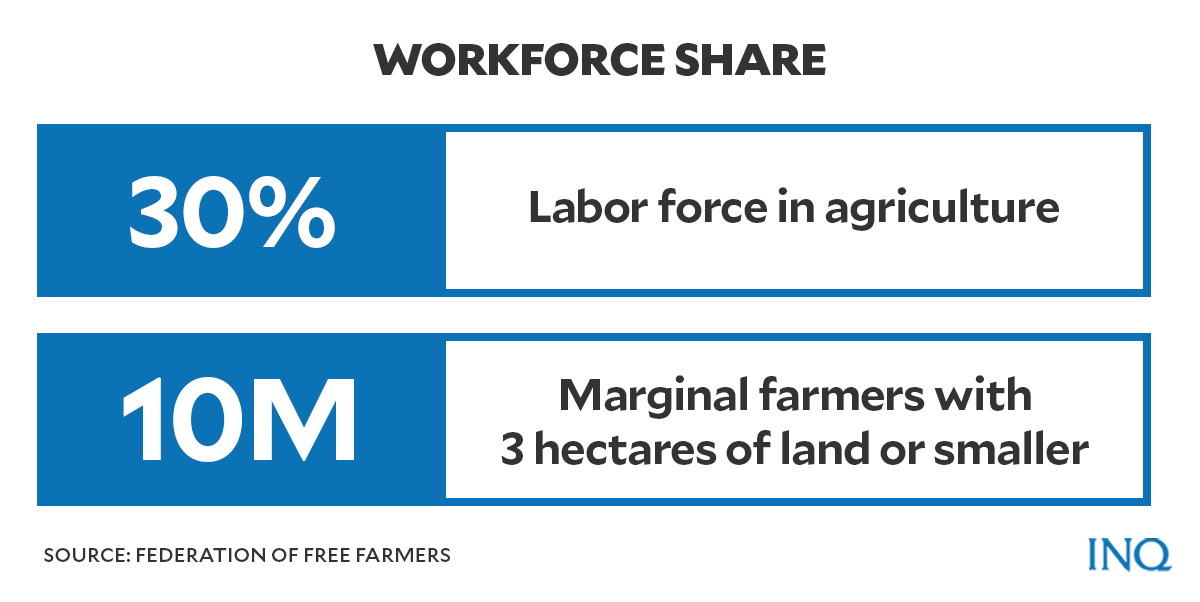Pandemic worsens gov’t neglect of PH agriculture
MANILA, Philippines—Prior to COVID-19 pandemic, the agriculture and fisheries sector in the country had been “stagnating.” The pandemic came in like a strong wave, hit the sector, and pushed it further from the shore—far from possible recovery.
“Under the pandemic, agriculture has been weakened further by transport and logistical breakdowns, aimless import liberalization, lack of health facilities to contain the virus spread, and poor distribution of amelioration assistance to the rural masses,” a group of agriculture and fisheries organizations said.
The statement was released by the Bayanihan sa Agrikultura, Federation of Free Farmers (FFF), Alyansa sa Agrikultura, Coalition for Agriculture and Modernization in the Philippines (CAMP) and Philippine Chamber of Agriculture and Food Inc. (PCAFI).
“We demand a reversal of this situation,” the groups said.
“Agriculture can and should play a leading role in national economic recovery and, more importantly, in ensuring social and economic development for all. To achieve this, urgent policy reforms must be institutionalized and implemented with decisiveness,” the statement read.
Article continues after this advertisementAs the next national elections draw nearer, the organizations listed major development challenges that President Rodrigo Duterte’s successor was likely to grapple with.
Article continues after this advertisementThe next administration, the groups said, should transform agriculture “into an engine of economic growth, a generator of jobs, a social and economic stabilizer in the countryside and the cornerstone of the country’s food security.”
To guide the next leaders on this new challenge ahead of them, the organizations detailed the plight of farmers and fishermen and listed recommendations to improve the agriculture sector’s current condition.
Low prioritization
Agriculture and fisheries sector, according to the group of agri-fisheries organizations, accounted for 30 percent of the country’s labor force.
This consisted of some 10 million small farmers — with three hectares or less of farm lands — farm workers, forest settlers, municipal fisherfolk, and other small-scale producers.
Based on the August 2021 Labor Force Survey (LFS) by the Philippine Statistics Authority (PSA), out of the 44.23 million employed persons in August, 25.1 percent were from the agriculture sector.
The Agricultural Indicators System (AIS) report released in June showed that the agriculture, forestry, and fishing sectors had a 10.2 percent contribution to the country’s gross domestic product (GDP) in 2020.
The gross value added (GVA)—used to measure the performance of the sector—in agriculture, fisheries and forestry in 2020 prices was P1.8 billion.
However, with the 25 percent contribution from activities dependent on agriculture — such as agro-processing and ancillary services — the sector’s total GDP contribution rose to 35 percent.
Unfortunately, despite improvements in direct and indirect contribution of the sector to GDP, the Department of Agriculture (DA) will only get two percent of the national budget for 2022.
Based on documents from the Department of Budget and Management (DBM), out of the proposed P5.024 trillion national budget for 2022, the DA will get only P72 billion next year.
This was after the DBM rejected the DA’s proposed P250 billion budget for 2022.
READ: 2022 gov’t spending plan: Less for COVID, more for NTF-Elcac
According to Ibon Foundation, a non-profit research group, the “negligible budget” for agriculture reflected the Duterte administration’s “glaringly low prioritization” of the sector.
“The already dismal 3.6 percent average annual share of agriculture and agrarian reform in the 2017-2021 national budgets under Duterte has fallen to an even smaller 3 percent in the proposed 2022 budget,” the group said in a statement.
“This average is also the lowest since the Ramos administration (3.5%),” it added.
The group also noted that the government’s lack of support for the sector has worsened the decades-long decline of agriculture.
According to the Ibon Foundation, the agriculture sector grew by an annual average of 1.6 percent in 2017 to 2020 under President Rodrigo Duterte’s administration.
This was only almost half of the 2.9 percent average annual growth recorded in the past 16 years or from 2001 to 2016.
The sector’s annual average contribution of 9.8 percent of GDP in 2017 to 2020 was also the smallest among post-Marcos administrations.
The Philippines also had a $7.7 billion average annual agriculture trade deficit in 2018 to 2020 — the largest three-year deficit in the last four decades.
Barely surviving
The group of agri-fisheries organizations also listed some of the major issues of the sector, which included lack of land tenure security by farmers.
According to the 2012 Census of Agriculture and Fisheries (CAF), Philippines holders or farm operators manage around 5.6 million parcels of land covering at least 7.3 million hectares.
At least 99.1 percent—or 5.5 million holdings or farms covering 6.8 million hectares—in the Philippines is managed by individual proprietors including households or individual holders or farm operators. Each individual proprietor had an average area of 1.2 hectares.
Corporate holdings or farms held an average area of 97.1 hectares while holdings or farms operated by cooperatives controlled 92.5 hectares average.
The PSA-led census also detailed that at least 46 percent of the country’s total holding or farm parcels were already fully owned by holders or farm operators.
According to the Department of Agrarian Reform (DAR), during the previous months hundreds of farmers have been granted land ownership after a wait of many years.
In March, 149 families received an 81.85-hectare government-awarded hacienda in Pili, Camarines Sur after a 27-year-ordeal against a private corporation. In the same month, 249 agrarian reform beneficiaries (ARBs) from Capiz province were awarded a total of 398 hectares of agricultural land.
The following month, DAR said 3,500 ARBs from SOCCSKSARGEN have also received Certificate of Land Ownership Awards (CLOA) from the department.
READ: Agriculture in PH: Barely surviving migration, conversion, poverty
The farmers’ groups also raised as an issue limited catch of marginal fishermen because of “continuing encroachment by outsiders into municipal waters and fishing areas within the country’s territorial sea.”
Other issues were lack of agricultural support services, limited processing of raw produce, inefficient marketing, transport, shipping of farm products. Also contributing to poverty in the agricultural sector were poor income of producers and shortage of local supply and high prices for consumers.
“The Philippines is a net food importing country,” the farmers’ groups said.
“In recent years, excessive importations of agricultural and fisheries products – without the proper safeguard measures and safety nets provided by law – have seriously depressed farmers’ incomes,” they said.
“Yet, consumer prices have fallen minimally,” they added.
Ibon Foundation said that the country’s dependence on food imports continued to escalate during the current administration due to the lack of importance given to programs to boost domestic agriculture.
“For instance, the rice import dependency ratio rose from 5 percent in 2016 to 20.2 percent in 2019 in the wake of the Rice Liberalization Law of 2017,” Ibon added.
The import dependency ratio, according to the group, has also increased significantly over the same period in the following products:
- garlic: 89.1 percent to 92.2 percent;
- potato: 14.8 percent to 18.1 percent;
- beef: 32.7 percent to 40.3 percent;
- tuna: 3.7 percent to 17 percent;
- pork: 10.6 percent to 12.9 percent; and
- galunggong: 0.4 percent to 21.9 percent
FFF and the other farmers’ groups also expressed lament over land conversion, degradation of natural resources including soil, water sources, forests and other natural habitats.
Climate change also loomed large, the groups said.
According to data by the DAR, a total of 97,592.5 hectares of agricultural land — the size of Metro Manila and Cebu City — were approved for conversion to non-agricultural purposes between 1998, the year the Comprehensive Agrarian Reform Law took effect, and 2016.
The approved conversion applications in DAR regional offices consist of 80.6 percent of agricultural land in Luzon, 7.8 percent in Visayas and 11.6 percent in Mindanao.
Pending applications for conversion, agricultural land reclassified by local government units, and illegally converted lands are, however, not included in the data.
These issues resulted in widespread poverty and loss of livelihood for the country’s small farmers and fisherfolk.
“Three out of every four poor Filipinos are in rural areas,” said the groups.
“Limited number and quality of job opportunities. Hence, big development disparity between rural and urban areas, and mass exodus to urban centers remains unabated,” they said.
According to the Ibon Foundation, the poverty incidence among farmers was 31.6 percent and 26.2 percent for fisherfolk—both much higher than the national average of 16.7 percent.
“Under the Duterte administration, an average of 328,000 agricultural jobs were lost annually from 2017-2020, which is the worst among the last six administrations,” the group said.
Major recommendations
The farmers’ groups listed some of measures which they said were must-do by the next administration.
Some of these were:
- Recognize the major role of agriculture and fisheries in the country’s food security and economic recovery.
- Adequate funding for agri-fisheries.
- Focus on domestic production, productivity and profitability of farmers
- Protection for farmers from pandemics, calamities and climate change events.
- Increase investment in rural, market, post-harvest and agri-fishery facilities.
- Genuine representation and involvement of farmers, fishermen and other stakeholders in planning and monitoring.
Importation, the groups said, “must be a last resort.” Income from imported goods should be shared among producers and consumers. The Rice Tariffication Act must be reviewed and changed.
Create and implement
The FFF, CAMP, PCAFI and Bayanihan sa Agrikultura also listed suggestions for the DA.
The DA, the groups said, should lead the shift from mono-cropping to diversified farming.
Rural credit and crop insurance must not be exceptions but the norm, the groups said.
“Mechanization, digital technology and appropriate innovations should be fast-tracked,” they said.
Province-led agriculture and fisheries extension systems must be fully implemented as these could help strengthen partnership between the DA and local government units.
Other recommendations by the groups for the next administration included:
- Full implementation of agrarian reform with support services.
- Creation of the Department of Fisheries and Marine Resources to help protect Filipino fishermen in the West Philippine Sea.
- A law on national land and water use
- Supervision by the DA of National Irrigation Administration
Women in agri-fisheries
“Women have a limited participation in areas like fisheries production, agricultural services and equipment or facilities,” the organizations noted.
Based on data from PSA, around 84 percent of the 5.6 million holders or farm operators were male while only 16 percent were female.
“Usually, a female household member becomes a holder or farm operator in the absence of a male head or male household member,” the 2012 CAF report said.
“Hence, this explains the nil percentage of female holders or farm operators in the country,” the report said.
The average age of farm operators was 47.2 years old. Males among them have an average age of 46.3 years old, or six years younger than women farm operators.
Wage distribution by gender of farmworkers likewise favored males. Male farm workers can receive up to P335 salary per day while women farmworkers will only get P304.
The farmers’ groups called for equity, productivity and justice for a bigger women’s empowerment program in agri-fishery.
TSB
For more news about the novel coronavirus click here.
What you need to know about Coronavirus.
For more information on COVID-19, call the DOH Hotline: (02) 86517800 local 1149/1150.
The Inquirer Foundation supports our healthcare frontliners and is still accepting cash donations to be deposited at Banco de Oro (BDO) current account #007960018860 or donate through PayMaya using this link.
